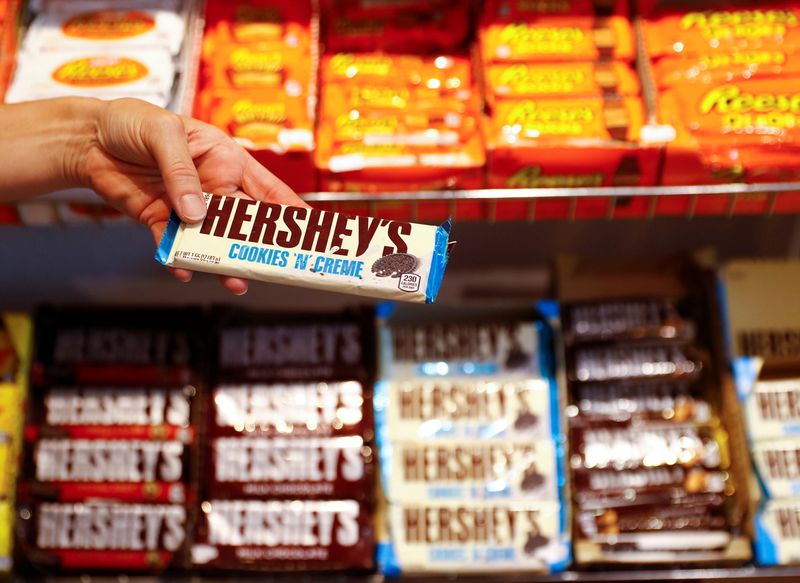(Reuters) - Hershey trimmed its annual revenue and profit forecasts on Thursday after missing Wall Street estimates for third-quarter, as repeated price hikes have dampened demand for its chocolates, confectionery, and salty snack products.
WHY IS IT IMPORTANT?
Chocolatiers, including Hershey, have raised prices to maintain profit margins amid rising raw material costs, particularly cocoa leading to a consumer pushback.
Additionally, shifting trends, including a generational pivot to non-chocolate confections, have eroded the Pennsylvania-based company's chocolate-dependent sales.
MARKET REACTION
Shares of the Jolly Rancher-owner fell about 2.5% in premarket trading.
CONTEXT
Packaged food peer Kraft Heinz (NASDAQ:KHC) also cut its annual forecast last Thursday, despite a third-quarter profit beat, as consumers shifted to cheaper, private-label alternatives.
Hershey aims to generate $300 million in savings by 2026 through cost-cutting measures and price hikes to offset rising cocoa prices and boost margin growth.
KEY QUOTE
"While year-to-date results have been affected by historically high cocoa prices and a challenging consumer environment, we are laser-focused on controlling what we can," CEO Michele Buck said.
BY THE NUMBERS
The company, one of the largest chocolate manufacturers in the world, anticipates full-year net sales growth to be flat, a revision from its prior estimate of about 2%.
Hershey forecasts annual adjusted earnings per share to decrease by mid-single digits, rather than the slight decline previously expected.

In the third quarter, organic prices rose 2%, while organic volume decreased by 3%, while total net sales fell 1.4% to $3 billion, missing analysts' average estimate of $3.08 billion, according to data compiled by LSEG.
Excluding certain items, the company earned $2.34 per share in the third quarter, below estimates of $2.56.